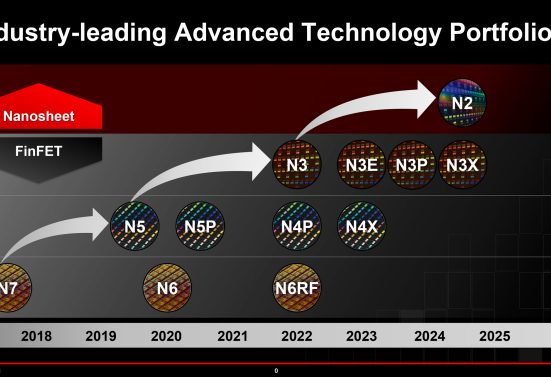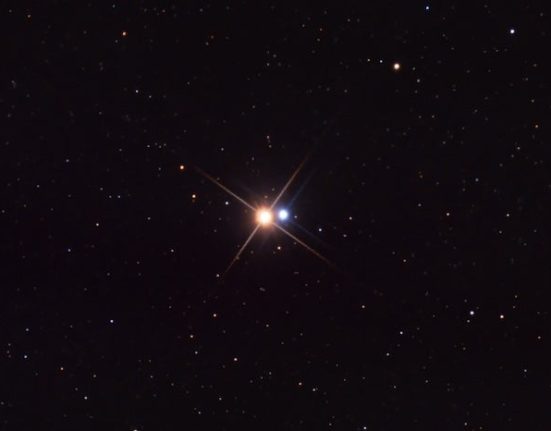Supermassive black holes (SMBHs) are found at the centres of large galaxies like our own. When they are actively feeding, they produce more light and are called active galactic nuclei (AGN). But their details are difficult to observe clearly because large clouds of gas block our view.
The JWST was built precisely for circumstances like these.
New research published in the Monthly Notices of the Royal Astronomical Society (MNRAS) presents JWST observations of a supermassive black hole in a galaxy about 70 million light-years away. The telescope found polar dust around the supermassive black hole. It was outside the expected torus of dust that accretes directly onto the black hole that researchers call an accretion disk. Polar dust is heated, but instead of being heated by radiation coming from the heated accretion disk, the gas is heated by energetic shock waves coming from relativistic jets.
The research is titled “Dust beyond the torus: revealing the mid-infrared heart of the local Seyfert telescope ESO 428-G14 with JWST/MIRI.The lead author is Houda Haidar, a PhD student in the School of Mathematics, Statistics and Physics at Newcastle University in the United Kingdom. Houda and her co-investigators are members of GATOS, the Study of Galactic Activity, Toruses and Outflows. According to the GATOS website, GATOS is an international team using JWST to “unravel the riddle of active galactic nuclei.”
“Having the opportunity to work with exclusive JWST data and access these stunning images before anyone else is beyond exciting,” said Houda. “I feel incredibly fortunate to be part of the GATOS team. Working closely with leading experts in the field is truly a privilege.”
This is JWST's first look at the galaxy in question, ESO 428-G14, but it's not the first time astronomers have looked at it. They've been observing the galaxy, called Seyfert galaxy Because of its high luminosity, the astronomical community has used several telescopes to examine the galaxy for decades, including ALMA and Hubble, and those data are part of this work.
The challenge in observing this AGN, and many others like it, is dust. The dense, sprawling clouds of dust and gas that ultimately feed the black hole block our view of it. JWST's job description is to pierce through dust like this and get a clearer view of these obscured regions.
The JWST has four main scientific themes, one of which is Galaxies through timeA combination of processes drives the evolution of galaxies, and active galactic nuclei are part of the picture.
Active galactic nuclei can emit relativistic jets of material from their poles that, in some cases, can extend hundreds of millions of light-years into space. ESO 428-G14 is no different: it emits radio jets from its poles. Astrophysicists know that gravitational and magnetic forces are behind these jets, but the exact mechanism underlying them is unknown and is an area of active research.
Jets could be the key to understanding SMBHs, how they recycle material in galaxies and the dust that accumulates around them in a torus. “For decades, the dust torus has been considered responsible for the dichotomy between type 1 and type 2 active galactic nuclei (AGN), forming the cornerstone of the unification of AGN,” the authors write.
The unified model of AGN states that type 1 and type 2 AGN are distinguished by their viewing angles, rather than by any fundamental differences between them. Type 1 is seen more face-on relative to the dust torus, exhibits broad emission lines in its spectra, and has visible accretion disks. Type 2 is seen more edge-on relative to the torus, exhibits narrow emission lines, and has hidden accretion disks.
Some AGN have polar dust separated from the dust on their torus. Many models predict that this dust is energized by jets exiting their poles. “However, little is known about their characteristics, spatial extent, or connection to the larger-scale outflow jets,” the researchers write in their paper. This is “the first JWST/MIRI survey aimed at imaging polar dust zooming into the centre of ESO 428-G14.”
JWST found extended mid-infrared emissions that extended up to 650 light-years from the AGN. The structure of this polar dust is collinear with a radio jet emitted by the AGN. But the dust is perpendicular to a line of molecular gas that feeds the AGN and obscures it. This is important evidence for the presence of polar dust. “Its morphology bears a striking resemblance to that of the gas ionized by the AGN,” the authors write.

This brings us back to the ongoing debate about how AGN energize the gas and dust in their environment. What role do jets play versus what role does electromagnetic radiation from AGN play? One line of evidence shows that dust absorbs electromagnetic radiation emitted by heated dust in the accretion disk.
However, the new JWST images show that much of the polar dust emission is spread out and extends along the paths of the jets. This strongly implies that the jets are responsible for heating and shaping the dust, with radiation from the AGN playing a minor role. The accreted dust and the polar dust have different temperatures, and that provides clues as to how different parts of the AGN are heated differently. Jet-induced shocks could be responsible for the heat differences between the polar dust and the accreted dust.

“There is a lot of debate about how AGN transfer energy to their surroundings. We weren’t expecting to see radio jets causing this kind of damage. And yet, here it is!” said Dr David Rosario, a senior lecturer at Newcastle University and co-author of the study.













Leave feedback about this